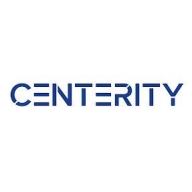

Zabbix and Centerity Monitor compete in network and infrastructure monitoring. Zabbix is favored for cost-effectiveness, while Centerity Monitor has an edge with comprehensive features despite a higher price.
Features: Zabbix provides scalability, strong community support, and flexibility through open-source solutions. Centerity Monitor offers built-in predictive analytics, a unified dashboard, and extensive features that cater to integrated monitoring needs.
Room for Improvement: Zabbix relies on external plugins for advanced analytics, has a steeper learning curve for new users, and may need enhancements in user interface design. Centerity Monitor could improve on cost efficiency, expand integration options for third-party tools, and enhance documentation for user guidance.
Ease of Deployment and Customer Service: Zabbix benefits from extensive documentation and an active community, facilitating straightforward deployment and troubleshooting. Centerity Monitor offers a streamlined deployment process and integrated customer service, providing organizations with personalized support.
Pricing and ROI: Zabbix has zero license cost, making it cost-efficient for budget-conscious infrastructures, with potential for lower operational costs over time. Centerity Monitor, requiring a higher initial investment, delivers a comprehensive feature set that can result in a higher ROI in environments needing advanced insights.

Zabbix is an open-source monitoring software that provides real-time monitoring and alerting for servers, networks, applications, and services.
It offers a wide range of features including data collection, visualization, and reporting.
With its user-friendly interface and customizable dashboards, Zabbix helps organizations ensure the availability and performance of their IT infrastructure.
We monitor all IT Infrastructure Monitoring reviews to prevent fraudulent reviews and keep review quality high. We do not post reviews by company employees or direct competitors. We validate each review for authenticity via cross-reference with LinkedIn, and personal follow-up with the reviewer when necessary.